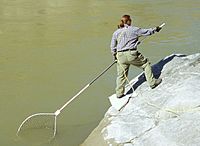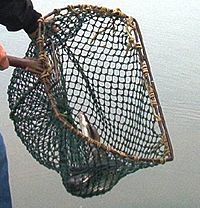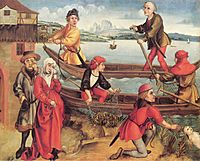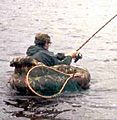Hand net facts for kids
A hand net is a special tool used to catch things in water. It's also called a scoop net. Imagine a fishing net or a basket with holes, attached to a stiff frame. This frame can be round or many-sided. Sometimes, it has a handle.
When a hand net has a long handle, people often call it a dip net. If a person fishing (an angler) uses it to help pull a hooked fish out of the water, it's known as a landing net.
People have used hand nets for a very long time. They are great for catching fish that swim near the water's surface. This includes strong fish like muskellunge or northern pike. Hand nets are gentle on fish. This means they are often used for "tag and release" fishing. They are also used to move aquarium fish safely.
Some people in Alaska use dip nets to catch sockeye salmon. This special fishing is for Alaskan residents only. It usually lasts for two or three weeks. People also use dip nets to scoop up crabs in shallow water. Crab nets are often made of wire or strong nylon. This is because crabs can fight and bite when caught.
History of Hand Nets
Hand nets have been used by traditional fishermen for thousands of years. They are used to catch small fish in shallow waters. They are also used in the open sea. These nets come in different sizes. Some are small enough to hold in one hand. Others are large scoop nets that need several people to work them. For example, the Karuk people of the upper Klamath River used dip nets to catch fish.
In England, catching eels with a hand net is the only legal way. People have done this for a very long time on the River Parrett and River Severn.
Gallery
-
Dipnet fishing platform on the Columbia River in Cascade Locks, Oregon
More About Fishing Nets
 In Spanish: Salabre para niños
In Spanish: Salabre para niños
- Lift net
- Cast net
- Butterfly net








